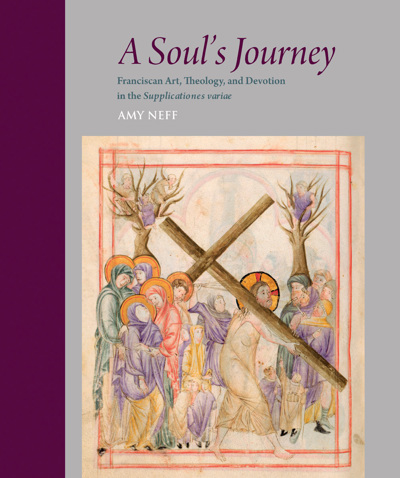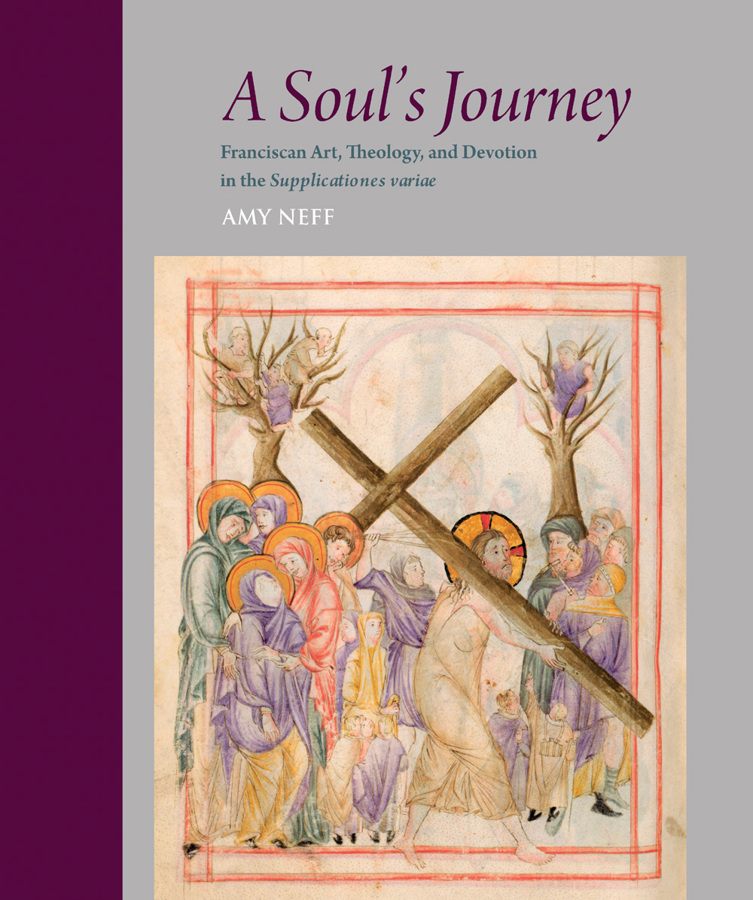
- Pages: xviii + 354 p.
- Size:245 x 297 mm
- Illustrations:244 col.
- Language(s):English
- Publication Year:2019
- € 140,00 EXCL. VAT RETAIL PRICE
- ISBN: 978-0-88844-210-9
- Hardback
- Temporarily Out of Stock
This is a major book. It mates an uncompromisingly meticulous presentation of the texts, imagery, and specially composed poems in the Supplicationes variae with a passionate, probing analysis of the spiritual content of the manuscript. The Supplicationes variae is a complicated, highly personalized volume; the author encompasses its complexity with steady mastery. Her text is a work of the utmost seriousness, presenting an artifact of great depth and beauty that is of interest on a wide range of fronts: its Genoese origin is exceptional in an artistic world dominated by Tuscany and the Veneto; its selective balance of north European, north Italian, and Byzantine imagery is unique and sophisticated; its use of full-page wash drawings along with fully painted marginalia and historiated initials is unparalleled; its Franciscan content is deeply serious; its spiritual function aligns it with a type of manuscript that has seen intense recent interest, but does so in a strikingly distinctive way given its Italian rather than transalpine origin. The intensity and meticulous care with which the author has explored the rich spiritual content and high artistic quality of the manuscript are unlikely ever to be matched; she has worked on the Supplicationes variae for many years with unflagging sensitivity and depth. Her book presents a major work of art with a major effort of scholarly and spiritual insight.
Annemarie Weyl Carr
Southern Methodist University
This book is an exemplary study of a unique manuscript, and a path by which to comprehend it, but it is also far more than that. Entering through the gateway of the Supplicationes variae the reader is introduced to many key issues in the contextualised study of art of the period, especially
Joanna Cannon
Courtauld Institute of Art
« (…) ce superbe volume, qui inclut l’apparat critique attendu (notes denses, solide bibliographie, index), et qui enrichit notablement notre connaissance de l’iconographie de la fin du XIIIe siècle dans sa relation à la pensée des Ordres mendiants. » (Christian Heck, dans Histara, 29.06.2020)
“(…) the book stands without question as an important and valuable contribution to medieval manuscript, art, and Franciscan studies.” (Sally J. Cornelison, in The Medieval Review, 10/08/2020)
Over her long career, Amy Neff has been committed to studying the role of images in reflecting and creating cultural ideologies, focusing on intersections of art, religion, and gender in medieval culture. Professor Emerita in the School of Art at The University of Tennessee, Knoxville, she is the author of numerous studies in medieval art history. Many of her publications explore the iconography of Mary and the impact of the Franciscan movement on the arts. The recipient of the Rome Prize from the American Academy in Rome, she has also been awarded fellowships by the Center for Advanced Studies of the National Gallery of Art, the Harvard University Center for Renaissance Studies at Villa I Tatti, and the National Endowment for the Humanities.
The Biblioteca Medicea Laurenziana in Florence houses an extraordinary manuscript: an anthology of devotional texts and images called the Supplicationes variae, dated 1293 and made for use in Genoa, that ends with a remarkable series of full-page illustrations. Although the Supplicationes does not include or illustrate Bonaventure’s seminal text, The Soul’s Journey into God, the manuscript is effectively the site for performance of a spiritual pilgrimage, for it is through the Franciscan theologian’s mystical and poetic concepts that the deeper meanings of its images can be discerned.
The decorative program of the Supplicationes mirrors Bonaventure’s theology of Christ as Center. Circular in composition, the introductory drawing of the Dextera dei visualizes the book’s underlying thematics of the center, while at the manuscript’s actual midpoint, Christ is pictured as the Man of Sorrows, who conjoins opposites, human suffering and divine glory.
Yet the manuscript is also a progressive journey of ascent. In the Supplicationes, as in Bonaventure’s influential book, the path to salvation begins in the world, where humankind has fallen away from God. In its Labors of the Months and marginal drolleries, the manuscript’s calendar gives unusual emphasis to the hard work, ignorance, sin, and distance from God that are part of earthly existence. But there is hope: even imperfect human nature innately reaches upwards, craving relief from misery.
God answers human neediness, Bonaventure writes, with the gift of prayer, and the Supplicationes pictures this gift in an unusual miniature depicting Trinitarian grace descending on David in prayer. David becomes a model for the reader’s subsequent journey through the manuscript’s progressively higher levels of prayer, from the vocal prayers of psalms and offices to the contemplative prayer of reading. But it is especially remarkable that in this Franciscan book the highest level of prayer consists in contemplating images. In the sequence of tinted drawings that closes the book, text yields to image, as the reader-viewer performs a non-verbal, experiential imitatio Christi, perusing the thirty-three illustrations of Christ’s life as if following the number of years of his life, and passing through Christ’s humanity to salvation.



